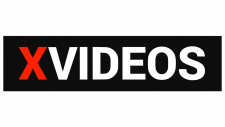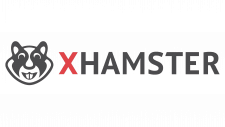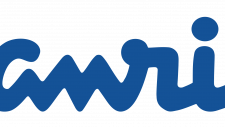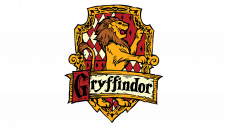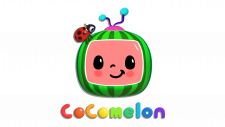Univision Logo
Univision is a Spanish-language television network that broadcasts in the USA to meet the demands of the country’s growing Hispanic community. The viewers get access to around-the-clock news, live broadcasts, reality programs, soap operas, and TV series, including Mexican series that bring a large audience to the network. For convenience, the network offers a mobile app that allows customers to watch all shows live or on-demand on their devices.
Meaning and history
Rene Anselmo founded the Spanish International Communications Corporation in 1961, which created Univision, the first national Spanish-language television channel. By 1982, Univision’s programs appeared on almost all Spanish television networks. Due to foreign ownership, the corporation had to sell some stations to Hallmark Cards Inc.. The network was sold back due to financial difficulties and successfully relaunched. It became publicly listed in 1996.
What is Univision?
Univision, an extensive Spanish-language media company, focuses on television, radio, and online media. In the US, it is the most popular Spanish-language TV network. It is the fifth-largest network in the nation.
1962 – 1970
The logo features the name of the company that managed the corporation’s marketing department. the inscription is done in all caps using sans-serif bold typeface. Vertically elongated characters as well as a division of the name between two lines allow for the logo to have a balanced width and length. The black color gives it a professional and timeless look.
1970 – 1987
A dashing and confident logo was presented in 1970. It still featured the same name, only abbreviating it. It was the corporation’s move to appeal to a wider audience and not limit itself. The letter “I” stood in the center, while the other two characters were done in a very similar style to create a symmetrical image. It turned out to be a great design that was easy to recognize. This version was used by the company for almost 20 years, until it decided to introduce a logo with a new name.
1981 – 1982
The logo presented here for Univision is a stark, monochromatic design that utilizes a digital, pixelated disruption effect on the text. The word “UNIVISION” is rendered in a bold, sans-serif typeface, which is partially fragmented into horizontal lines, suggesting a motion or glitch. This could represent the digital nature of television broadcasting, with the interruption pattern perhaps signifying the transmission of data. It’s a creative take that communicates modernity and the digital era, as well as the brand’s connection to technology and innovation in media. The simplicity of the black and white color scheme ensures high contrast and visibility, key for brand recognition.
1982 – 1987
Featuring “Univision” for the first time, this logo is done in a reserved manner and has classic, traditional notes. The font choice features attractive curved lines and vertically elongated characters, which refers to the original logo. A square emblem was placed at the top. It featured a frame with multiple thin alternating black and white lines. In the center, there is a black circle with a fingerprint-like pattern in the lower portion. The design of this emblem makes one focus on what is in the center. There is no exact meaning though and it is rather an abstract graphical addition to a more basic inscription.
1987
The logo was redesigned and the idea with multiple lines and the circle acquired a new meaning. It was now a white moon on a dark, night sky behind the shades. It created a cozy feeling for family nights, but could also hint at the dangers of the night. This made it a versatile symbol. The font was changed but it still had fluent lines. The company also added a “Spanish International Network” tagline to ensure that the viewers do not consider Univision a new network.
1987 – 1989
A colored version with some modifications was presented the next year. The name was printed in golden and had some volume thanks to the addition of shadows. The dark black night sky was changed to muted purple. The two colors go very well together and create a regal and luxurious look.
1989
An excessively lavish and magnificent logo was used during a short period in 1989. It was the name printed in golden using a font with bracketed slab serifs. The most striking part was the three-dimensional appearance of the letters with transparent, glossy sides. The letter “I” stood in the center while the remaining inscription on the right and the left was placed at an angle, creating an illusion of perspective.
1989 – 2012
A new emblem was introduced in 1990. The moon-inspired image was replaced by a vibrant and colorful geometric shape that resembled a cup and stood for the first letter in the name. It was formed from three quarter circles placed at different angles and a square. these are done in different colors – purple, red, green, and blue. It surely reflected the diversity of the content on the network. The name is printed using a simple and clean sans-serif font that goes well with geometric shapes. The logo has a very different feel than the earlier versions.
2013 – 2019
A more modern and stylish logo was created in 2012. The designers worked with the previous version, giving the U-shaped image a three-dimensional appearance. The colors got brighter and more vivid. The Univision inscription, on the other hand, was now printed in dark gray instead of black. This meant that all the attention was on the colorful element of the logo that was easy to remember and recognize. The font has also been updated to one that had more smooth curves that match the image above.
2019 – Today
Only slight changes were made to the logo this time. The designers gave the logo a more minimalistic and contemporary look. They removed the glossy and three-dimensional appearance. The flat, muted colors made the logo look more sophisticated and grand.
Font and Color
For the first twenty-five years, the logo had a monochromatic black-and-white color palette. Then, the purple and golden were introduced. Since 1990, the logo acquired its recognizable image. The red color in the logo reflected its strong position on the market, while the blue suggested that the network is reliable and trustworthy. The purple color gave it a sophisticated, royal appearance that the company tried to achieve with the introduction of golden color in the earlier years. There was also a green color that looked welcoming and stood for the network’s growth. At the same time, the color palette can be a reflection of the Spanish culture that is known for its vibrant colors.
The company has drastically changed font styles multiple times. First, it went the safe route and used a basic, clean, sans-serif typeface. Then, the viewers saw a bold, geometric font that allowed to create a very symmetrical monogram-style logo. It was not long before it was replaced a by completely opposite font style with fine, elegant lines. There was something vintage about it with an art-deco touch. A three-dimensional font was used only for a few months before the company went back to a simple font similar to the one seen in the original logo. Starting from 2012, the font resembled Posterama 1984 Bold.












